We all know the proverb, “Nothing is certain in this world except death and taxes.” We talk a lot about taxes, but we talk very little about death. Indeed, for many of us, end-of-life is an uncomfortable subject, one we avoid discussing at all costs.
Not so for our guest, New York Times columnist Jane Brody, who for years has written with great clarity and beauty about many facets of the end of life, taking on the practical, ethical, emotional, and spiritual questions that many of us are afraid to touch. She has done so in her award-winning Personal Health column in the Times and in her most recent book, Jane Brody’s Guide to the Great Beyond. Brody is also the author of more than a dozen other books including two best-sellers, Jane Brody’s Nutrition Book and Jane Brody’s Good Food Book.
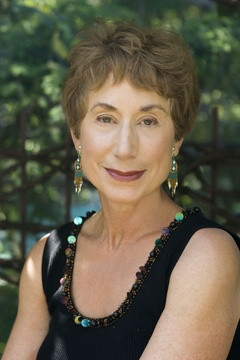 Jane Brody
Jane Brody
Brody’s insights into death and dying recently took on a more personal dimension as well: Earlier this year, she lost her husband to lung cancer.
As part of our “Greater Good Podcast” series, Brody recently spoke with host Michael Bergeisen about the steps we can take to prepare ourselves and our loved ones for the inevitable, the greatest challenges she’s faced after losing her husband, and how—and why—to make death and dying less frightening.
You can listen to the interview here, and we encourage you to subscribe to the podcast series through iTunes. Below we present a condensed version of the discussion.
Michael Bergeisen: For some time you’d had great success writing about health, nutrition, and food. Why did you decide over the last few years to devote so much attention to the end of life in your New York Times column, and then to write a book about it?
Jane Brody: Well, for starters, death is a part of life. If you’re born and you live, you will eventually die, and we need to come to terms with that fact. We seem to have divorced life from death. More people die outside of houses now than in them, so that people are not familiar with the ramifications of a dying person—what needs to be done, what should not be done—and I’ve been impressed by the enormous amount of money that is spent on the last few months of life doing needless, costly, and painful—emotionally and physically painful—interventions, just because we have them available.
And I’m getting older. I just turned 69, and, ironically, a year and a few months after my book on death and dying was published, my husband died. Having that material available to me made the end of his life so much easier to deal with—not just for me but for him, because we knew exactly what to do, what not to do, and he was perfectly clear about what he wanted and didn’t want. The whole family was on the same page, and it was just a much more pleasant experience than it might otherwise have been, however unpleasant death and dying can be.
MB: End of life issues include the very emotional and spiritual, as well as the more practical. I’d like to discuss one of the more practical concerns, and that is advanced directives. What are advanced directives, and why are they important?
JB: Advanced directives come in two critical forms. One is called the “living will.” In most states, unfortunately not my own, New York, a living will is a legal document, but that does not mean that doctors will follow it unless you have the second kind of advanced directive, which is the assignment of a health care proxy—someone who holds power of attorney for health care, meaning that that person represents you when you cannot speak for yourself. This is very important to have.
My husband and I were each other’s health care proxies. We had our son who lives nearby as a secondary in case one of us wasn’t available when the time was needed. The only time that these directives come into play is when the patient is unable to elucidate what they do and do not want in the way of medical care. In other words, if the person is in a coma, or if the person has serious dementia, or has a stroke and can’t communicate properly—these kinds of issues often result in somebody else having to stand in for the patient.
MB: Now what should one do if one wants to approach an issue like this with, say, an elderly relative who’s reluctant to talk about end-of-life issues?
JB: I’m so glad you asked that, because it’s the most common question: “My mother, my father will not talk about this with us. Every time we try to broach the subject, they change the subject, or they say, ‘I’m not interested’ or, ‘You think I’m dying right now? I’m not dying.’”
The answer is simple: This is not about you. This is about the people who love you, the people you care about. Are you willing to put them through the tortures of not knowing what you would want to do under various circumstances?
I think the most telling argument is to simply say, “You know what? Of course, I sincerely hope you will live for many more years to come and everything will go fine and one day, without any trauma whatsoever, you’ll simply not wake up from your sleep. But we know that doesn’t always happen. So while we can hope for the best, let’s just prepare for the worst, just in case.” I think that’s the best approach.
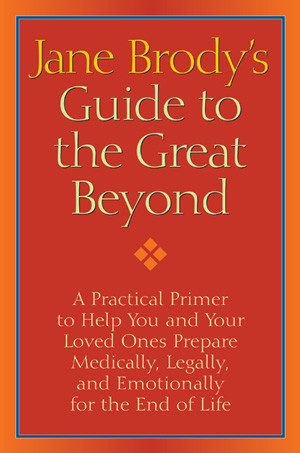
MB: You mention in your book some common emotions that one is likely to encounter from a loved one who is dying. Can you describe some of those emotions and reactions?
JB: It’s interesting because, years ago, Dr. Elizabeth Kübler-Ross wrote a book called Death and Dying, in which she enumerated five stages that people go through when they’re approaching the end of life. And the fact is that very few people go through those five stages in any sort of order, and many of them skip over some stages and never get to the end stage, which is one of acceptance. People may be angry, they may be in denial, they may just be furious about the whole possibility that their life is coming to a close before they’re ready to have it closed.
On the other hand, some people are in complete acceptance. This happened to me with a friend who was diagnosed with AIDS. When we found out about his illness, he was 69 years old, which is exactly how old I am now, and I don’t feel prepared to die. But he said, “You know, I’ve lived a good life. I am not afraid to die,” and that took the burden off the people who cared the most about him. We were able to be on the same page with him because he was not afraid, and he was he could reflect back on his life and realize that he had a very good one up until that point. The amazing thing is that he lived another 10 years, and he enjoyed every minute of those 10 years that he could.
It was a very good lesson for me to learn, I have to tell you, because at the time, I was in my early 50s and death was very frightening to me. It’s frightening to lots of people. But that doesn’t mean we have to just ignore it—and in fact, we shouldn’t ignore it.
MB: Do you have any thoughts about how best to respond to a loved one who’s dying and experiencing intense anger as a result?
JB: I think we should always acknowledge where the person is, and say, “Yes, you don’t want to leave this world. There are things that you still want to do, there are people you still want to see. But how can we make it easier for you? What can we do to help assuage your anger? Are there unresolved conflicts that you would like to resolve—is there a a child or relative or a friend that you’ve been separated from that you want to see and speak to?” You do the best you can.
MB: In your book, you make some interesting observations on the issue of dying at home—for example, you challenge the common belief that most people would like to die at home. What have you learned about this question?
JB: Well, it’s interesting, people say they want to die at home until push comes to shove and they’re miserably uncomfortable and they realize that the kind of care they need is not easily delivered at home. Now there is a wonderful opportunity out there called home hospice, where professional workers can come and help to ease the ability to die at home in reasonable comfort.
But the fact is that you have to have somebody who is your 24-hour, seven-day-a-week caretaker present who is able to care for you when the hospice workers are not present. Very often, this just doesn’t happen—it couldn’t happen, for example, in my own case, because I’m a little girl and my husband was a big man and I am not physically capable of moving him. I could not change his position, I could not clean him, I could not hold him up when he needed to be held up. So he had in-patient hospice, which worked out famously. He was in a lot of pain; they immediately recognized what they had to do to make him more comfortable.
The whole family is treated in hospice, which is so wonderful because our concerns were addressed at all times: There was always a counselor available or chaplain available to talk to the family, there was always a medical person there to tell us what was happening when we didn’t understand what was happening.
But the second reason that home hospice was not an option for us was that my husband was on Medicare. Medicare covers four hours a day, five days a week of hospice care; the rest of the care has to be paid for out-of-pocket, whereas in-patient hospice was totally covered by Medicare and we did not have to spend one cent.
MB: Can you describe a bit more about the basics of hospice for those who may not be familiar with it?
JB: There are two aspects of hospice care. One is what we call palliative care, which should be available to everybody, because palliative care simply means attention to symptoms and attention to making the patient as comfortable as humanly possible, both physically and emotionally and spiritually.
But in hospice, there’s more than that. There is the fact that you have relinquished the goal of treatment for your disease. Every symptom can be treated, everything that makes you uncomfortable can be treated, whether it’s nausea, pain, hiccups, any number of symptoms that afflict people toward the end of life—every one of those symptoms is cared for, but not your underlying disease.
MB: And do some people commonly wait too long before using hospice care?
JB: Michael, most people wait too long. Most people wait too long. It’s really a small percentage of people who get the amount of hospice care that would really enable hospice workers to know you and your family well enough to give you the optimum kind of treatment. The average stay in hospice for patients in the United States now is 18 days. For many many patients, however, it is only a week or three days or even one day, so in that amount of time, it is really not possible for patients to get the kind of care they really need.
MB: So how can we address that?
JB: We really have to come to terms with the fact that at a certain point, treating the disease is not an issue any longer; it’s making your end of life as comfortable as humanly possible. When we can come to terms with that—that there is really no other option as far as treatment for your disease is concerned—that’s the time to go into hospice, not at the last minute when you can no longer breathe.
MB: And that is such a painful thing to acknowledge though, isn’t it?
JB: It’s very difficult, and it’s best if the patient makes the acknowledgment on his own, as did my friend Jan Jeffrey, who fought, or she said she “coexisted with,” her disease, a kind of cancer that knocked out her immune system, for two and a half years. But once she realized that the treatment for her cancer was not doing her any good any longer, she announced that the time had come to go into the hospice. And she lived several weeks in comfort in hospice care in the very same hospice, in fact, that my husband was in. I was so impressed by the kind of care that she got that there was no question as to how we were going to approach this issue when the time came.
MB: I’d like to as you a few questions about physician-assisted suicide, also called physician-assisted dying, which is still a very controversial subject. It is permitted only in Oregon and Washington—
JB: And Montana.
MB: Oh, and Montana as well, as well as a few European countries. First could you describe exactly what physician-assisted suicide is?
JB: What it is is when a person is clear about their desire to end life because they are dealing with an untenable situation—they know they can’t get better, they’re losing their minds, they’re physically incapable of doing things—and a psychiatrist has ascertained that this person is not seeking an end of life simply because they’re depressed. That is critically important. Depression can be treated, even if a person is terminally ill, depression can and should be treated, so that is not a reason to end a person’s life.
What it is really is that a doctor can prescribe something to make things happen more quickly, but the patient has to be able to execute it. It’s assisted by the doctor, but not done by the doctor. The doctor doesn’t end a person’s life, the doctor simply makes it possible for that person to end life if it’s deemed a reasonable option.
And I have to say that in Oregon, where the experience is now more than a decade, there has not been this epidemic of physician-assisted deaths. Relatively few people approaching the end of life have requested this and have been granted it. It’s not this enormous wiping out of lives that people feared. It is less to be feared than a lot of other options, like dragging on a life that has no point any longer.
MB: And may I ask if you’ve come to your own conclusion about whether physician assisted dying should be allowed?
JB: I think it should be allowed, and it has to be allowed under the same kinds of strictures that Oregon has in place: It has to be very carefully administered, and it has to be monitored to make sure that things are happening the way they were meant to happen.
MB: Are there any strong arguments against the practice of physician-assisted dying that you think should be noted?
JB: The strongest arguments are usually religious arguments. It is not accepted in certain religions for anyone to end life before it ends itself. But there have note been these “death panels”—that’s just total nonsense. Tthere was never a death panel concept in any of the health care reform bills. There was simply a provision to reimburse physicians to have end-of-life discussions with patients and their families so that people know what they’re up against and understand—emotionally and monetarily and physically—what is involved with the various options that they face.
MB: You talked earlier about the idea that someone approaching death goes through five stages of grief, and that you have not found all that much scientific support for that. How about for loved ones and how they deal with grief?
JB: Well, the same five stages were elucidated for grief as were for death by Elizabeth Kübler-Ross. And again, as with death and dying, people don’t necessarily go through these nice handy stages. Some people rant and rave and carry on and have an extraordinarily difficult time coming to terms with the fact that they’ve lost a loved one. On the other hand, some people come to acceptance right away: They know they’ve done their best, they know that the person was treated well, and life has to go on.
Grief is not a disease, that’s number one. We have to get rid of the idea that when someone is grieving, they’re doing something wrong and should be treated. Only very few people need treatment, and those are the people still paralyzed and unable to get on with life a year after they’ve lost a loved one. If that happens, treatment is necessary. But that is the vast minority of of people.
Most people are kind of like me: We saw it coming, we realized there were a lot of things that had to be done, you keep busy, you let people help you with simple things—I mean, one of my friends found that the most helpful thing that happened to her when she lost her husband was that somebody came in and realized that in the three months that he had been sick, she let her refrigerator go to hell in a handbucket, and offered to clean out the refrigerator, which was fabulous.
MB: Is there anything about your own personal experience of grief that has surprised you?
JB: Well, it’s interesting, when my mother died, I was 16 years old, and it took me a whole year to cry for her loss. People might’ve looked at me and said, “Oh, she doesn’t even care that her mother died,” and that wasn’t true at all. It’s just that I wasn’t prepared to accept it at that point, and that was okay.
Whereas with my husband, the hardest time has been when I do things that we traditionally did together. But I have really been amazed by what I’ve been able to do that we did together, and feel empowered by the fact that I was able to do on my own. For example, I have two houses and lots of cleanup to do on the outside of one of those houses, which my husband and I always did together. I did it all by myself, and when I was all finished, I said, “Look what I’ve accomplished. I can go on. I can do this.”
Oh, another classic one is I always hated going to the moves by myself, I never went to the movies by myself. I have now seen three movies by myself. And when there’s something that happens in the movie that I don’t understand, and I don’t have my husband next to me to ask him, “What happened here? Where did this come from?”, I ask whomever’s sitting next to me. And they have been so far very cooperative about explaining these things that I missed.
MB: Is there anything else about your experiences as your husband approached death that either surprised you or that was just a very powerful insight that you’d like to share?
JB: Well, there are two things. One, is the fact that we allowed ourselves to believe what the doctors were telling us. We had no reason not to believe them because four different doctors from four different disciplines all agreed that a a certain kind of palliative treatment might alleviate his symptoms and make him feel better and live a few weeks longer, because we were trying to get him to live long enough for a concert in his honor, and he was supposed to be at that concert. So we allowed ourselves to believe what the doctors thought was going to help him; in fact, it made him quite miserable. One day, I finally said, “This is not working. He is not feeling better, he is feeling worse, and it is time to stop.” And that’s when the doctors said, “Yeah, we agree.” It’s funny, because until I said that, they didn’t say it.
The other thing that really amazed me was the extraordinary response of both of my daughters-in-law—how wonderful they were with their father-in-law at the end of his life, how they sat with him for hours upon hours and helped to make him comfortable and told him repeatedly how much they loved him, and how much his life had meant to them. My sons, of course, they didn’t surprise me because they are very articulate and loving, and they really told their father, while he was still able to fully understand what they were saying, how much his life had meant to them and and how much they would carry on the lessons that they had learned from him to their own children.
MB: One of the questions that I’d wanted to ask you was whether, based on your research, you thought there is such a thing as a good death. And this may be presumptuous of me, but it would seem as if what your husband experienced might be the very definition of a good death.
JB: Well, it was as good as it could’ve been under the circumstances.
MB: And have you thought about whether there is such a thing as a good death?
JB: I think that the definition of a good death is different for different people. For some people, it may be raging against the dying of the light; for others, it may be what my husband experienced as complete acceptance of the fact that the end was very near, and the sooner it came, the happier he was going to be. We should not force people who are dying to accept our concept of a good death. We really need to accept the dying person’s concept of a good death.

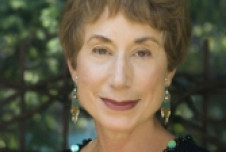

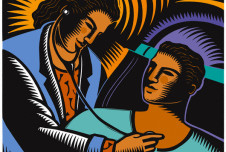
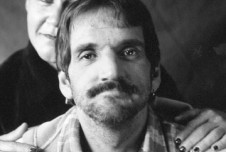

Comments
we talk little about death because there is no life after
but after taxes .. it might be a prison .. lool
in my piont .. it doesn’t matter how death would be .. it’s the end of this life
asalah | 9:50 pm, September 24, 2011 | Link